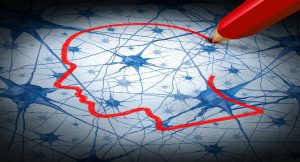What Is Secondary Gain
Secondary gain, as it relates to medical diagnosis is defined as the benefits that a person receives relative (secondary) to an injury or illness. The injury or illness may or may not be legitimate.
One example of secondary gain is a person involved in an auto accident who has a potential lawsuit against a negligent party. The more severe the injury, the greater the value of the lawsuit.
Some exaggerate their physical condition for the purpose of appearing more injured than they actually are with a specific intention.
There are different types of secondary gain but they all include an exaggeration of symptoms for personal advantage and are recognized as resulting from a psychiatric disorder. (Those who are aware of the behavior are known as malingerers which are not a psychiatric condition).
In other words, using physical symptoms to attain personal gain can be presented in a conscious manner (knowingly) or unconsciously without a physiological basis.
The person generally seeks “compassion, increased attention, freedom from everyday responsibilities, and the like.” (Watzlawick, 1967, p. 287).

Recognized Mental Health Conditions
Secondary gain can result from a recognized mental health condition(s) listed in the Statistical Manual of Mental Disorders, 5th Edition (DSM-5) under the section covering Somatic Symptom Disorder and Related Disorders.
The following classifications are identified:
Factitious Disorder – intentionally producing mental or physical symptoms without any external rewards.
Somatic Symptom Disorder – the expression of physical (somatic) symptoms using mental phenomenon (of the senses).
Conversion Disorder – sensory or motor symptoms with no physical basis.
Illness Anxiety Disorder – being preoccupied and consumed by a condition or illness without symptoms or with minor symptoms.
While each Disorder has its own specific characteristics that separate it from another Disorder, the commonality is that the thoughts, feelings, and behaviors are an excessive response to physical symptoms and health concerns.
Each of these disorders causes severe distress, impairment and social functioning.
What is Neuro-Linguistic Programming?
Neuro-Linguistic Programming (NLP) involves three components of the human experience: Neurology, Language and

Programming. Our neurological system controls body function, language is the basis of the way we communicate and programming involves the models we create.
NLP explains the interplay of the mind (neuro) and language (linguistic) and the impact on the body and our behavior (programming).
Because NLP presumes ‘all behaviors have a good intention’ it focuses on subconscious (unconscious) processes as well as the mind’s perception.
NLP acknowledges that our brain records and retains every experience whether bad or good, which is recalled through our senses. (This theory infers there must be either a feeling, a memory picture, or even self-talk through thought processes – or a combination – that basically activates a behavior).
NLP and Secondary Gain
In relation to the mental processes that trigger secondary gain, because there are no physical conditions occurring to cause the reported symptoms, it is obvious that some level of distorted thinking has occurred or is occurring.
The distorted thoughts originate in the subconscious processing which is located in the hippocampus and hypothalamus of the brain.
By using NLP techniques the subconscious feeling, memory or self-talk thought processes is restructured in order for it to be useful.
The goal is to assist those portions of the brain that deal with the subconscious automatic processes to realize that certain behaviors are no longer beneficial.
It is certainly not therapeutic to tell a patient that basically it’s all in the head.
NLP is similar to Cognitive Behavior Therapy (CBT) but NLP is more effective in that it teaches coping strategies through relaxation techniques of meditation as well as self-hypnosis.
This provides a route for re-patterning the subconscious by breaking down the structure of “assumptions” which is a filter between subconscious and conscious processes.
A qualified and properly trained NLP therapist has a series of tools available to achieve that goal.
SOURCES
-Health Care Superv. 1994 Sep;13(1):10-5.
-(Watzlawick, 1967, p. 287).
-Statistical Manual of Mental Disorders, 5th Edition (DSM-5)
-www.hopkinsguides.com/hopkins/view/Johns_Hopki
-www.networks.nhs.uk/nhs-networks/nlp-in-healthcare

Thanks was very healthy for me read this. Recently, about 6 months ago, I lost a spouse to illness anxiety disorder. No matter what she found a remedy for it was never long lasting. She seemed to find something else wrong. It has been heartbreaking to experience.
Could you please look at my website.
Thank you Tony for your comment. And I am so sorry for your loss. Anxiety, if not properly controlled, can cause what I call distorted thinking. I have experienced it. I was fortunate to have been under the care of a very good doctor who believed me when I said “something is still wrong.” It is difficult to understand what is off balance, I just knew it was. I have some upcoming articles that may help you in your time of grief. Just remember that you will get through this. If you have found you are blaming youeself, please understand that it had nothing to do with you. Try some guided meditations. Michael Sealy on YouTube has free sleep hypnosis sessions. You may also find my blog in meditating in bed will start you on your healing journey.
Peace to you!
Carole
Thanks I recently lost a spouse prescription pain medication. It was painful and heart breaking to watch. With all the medication she was on, I thought she would get better.
Thanks for sharing your heart felt story. I recently lost a spouse to an opioid addiction. If she found a cure for one ailment it would not last long. she would always find something else wrong. It was heart breaking to watch. Your website is thought provoking and well written. She definitely had some king of Mental Illness disorder. I found overwhelmed what to do at times. I wish she could have found some type of Meditation and not Medication.
Thank you Tony for your comment. And I am so sorry for your loss. Anxiety, if not properly controlled, can cause what I call distorted thinking. I have experienced it. I have also experienced long-term chronic pain with pain management. One of the effects of pain medication as treatment is opioid dependence and is the reason that the pain specialist must be involved. However, there are many physicians who are not trained in pain management and will prescribe pain medication improperly. I hope that was not the situation with your spouse. Part of the pain management is being responsible to yourself and doing exactly what the doctor orders.
.I have some upcoming articles that may help you in your time of grief. Just remember that you will get through this. If you have found you are blaming yourself, please understand that it had nothing to do with you. Try some guided meditations and let me know if those help. I have a new comment/question form on my website for that purpose. Michael Sealy on YouTube has free sleep hypnosis sessions. There is a free guided meditation by Mr. Sealy at the end of my article How to Meditate in Bed.
Peace to you,
Carole